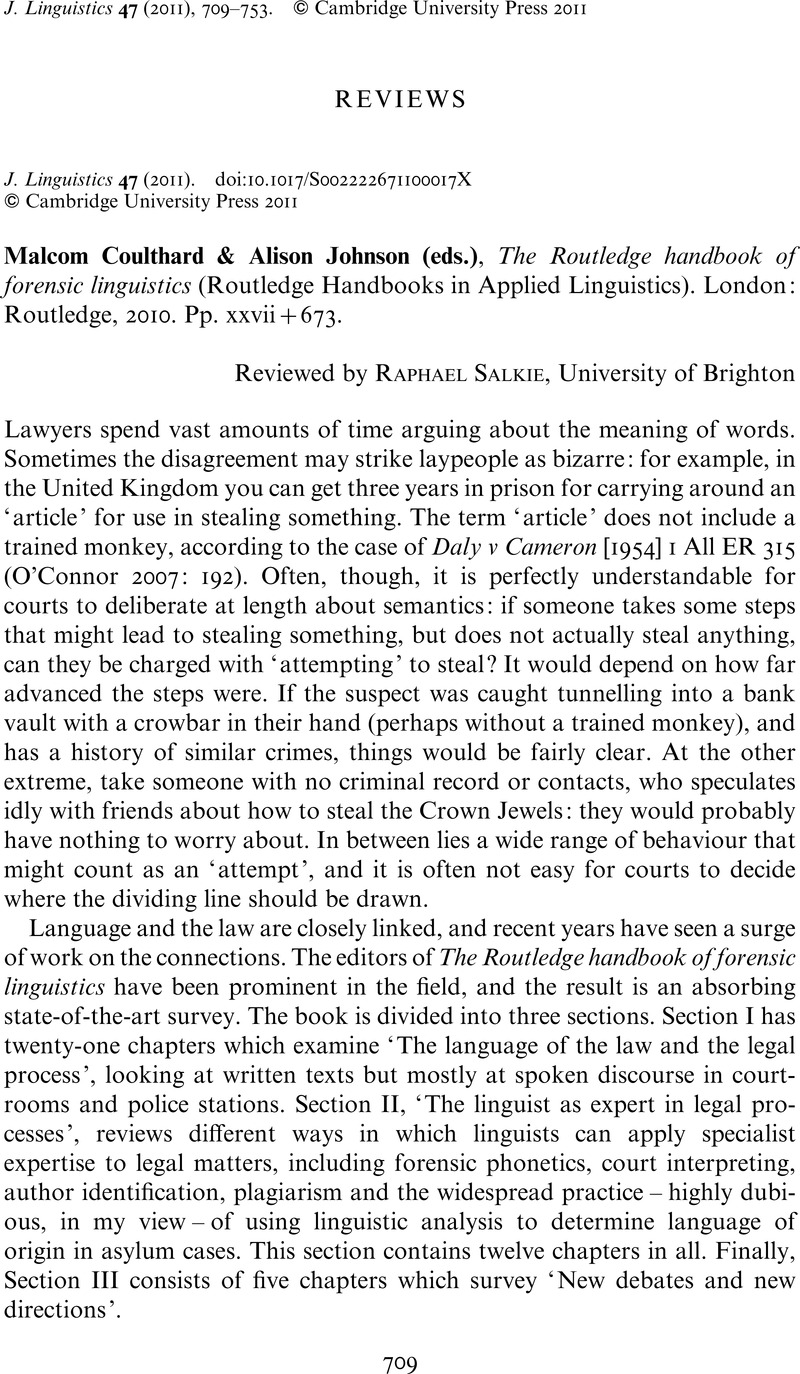No CrossRef data available.
Article contents
Malcom Coulthard & Alison Johnson (eds.), The Routledge handbook of forensic linguistics (Routledge Handbooks in Applied Linguistics). London: Routledge, 2010. Pp. xxvii+673.
Review products
Malcom Coulthard & Alison Johnson (eds.), The Routledge handbook of forensic linguistics (Routledge Handbooks in Applied Linguistics). London: Routledge, 2010. Pp. xxvii+673.
Published online by Cambridge University Press: 26 September 2011
Abstract
An abstract is not available for this content so a preview has been provided. Please use the Get access link above for information on how to access this content.

- Type
- Reviews
- Information
- Copyright
- Copyright © Cambridge University Press 2011
References
REFERENCES
Bench-Capon, Trevor & Sartor, Giovanni. 2003. A model of legal reasoning with cases incorporating theories and values. Artificial Intelligence 150.1–2, 97–143.CrossRefGoogle Scholar
Cotterill, Janet. 2000. Reading the rights: A cautionary tale of comprehension and comprehensibility. Forensic Linguistics 7.1, 4–26.Google Scholar
Ellsworth, Phoebe C. 2005. Legal reasoning. In Holyoak, Keith J. & Morrison, Robert G. (eds.), The Cambridge handbook of thinking and reasoning, 685–703. Cambridge: Cambridge University Press.Google Scholar
Green, Michael S. 2003. Dworkin's fallacy, or what the philosophy of language can't teach us about the law. Virginia Law Review 89.8, 1897–1952.CrossRefGoogle Scholar
O'Connor, Paul. 2007. Blackstone's police manual, 10th edn.Oxford: Oxford University Press.Google Scholar
Slapper, Gary & Kelly, David. 2011. The English legal system, 12th edn.London: Routledge.Google Scholar
Soames, Scott. 2008. Interpreting legal texts: What is, and what is not, special about the law. In Soames, Scott, Philosophical essays, vol. 1, 403–423. Princeton, NJ: Princeton University Press.Google Scholar
Sprack, John. 2006. A practical approach to criminal procedure. Oxford: Oxford University Press.Google Scholar


